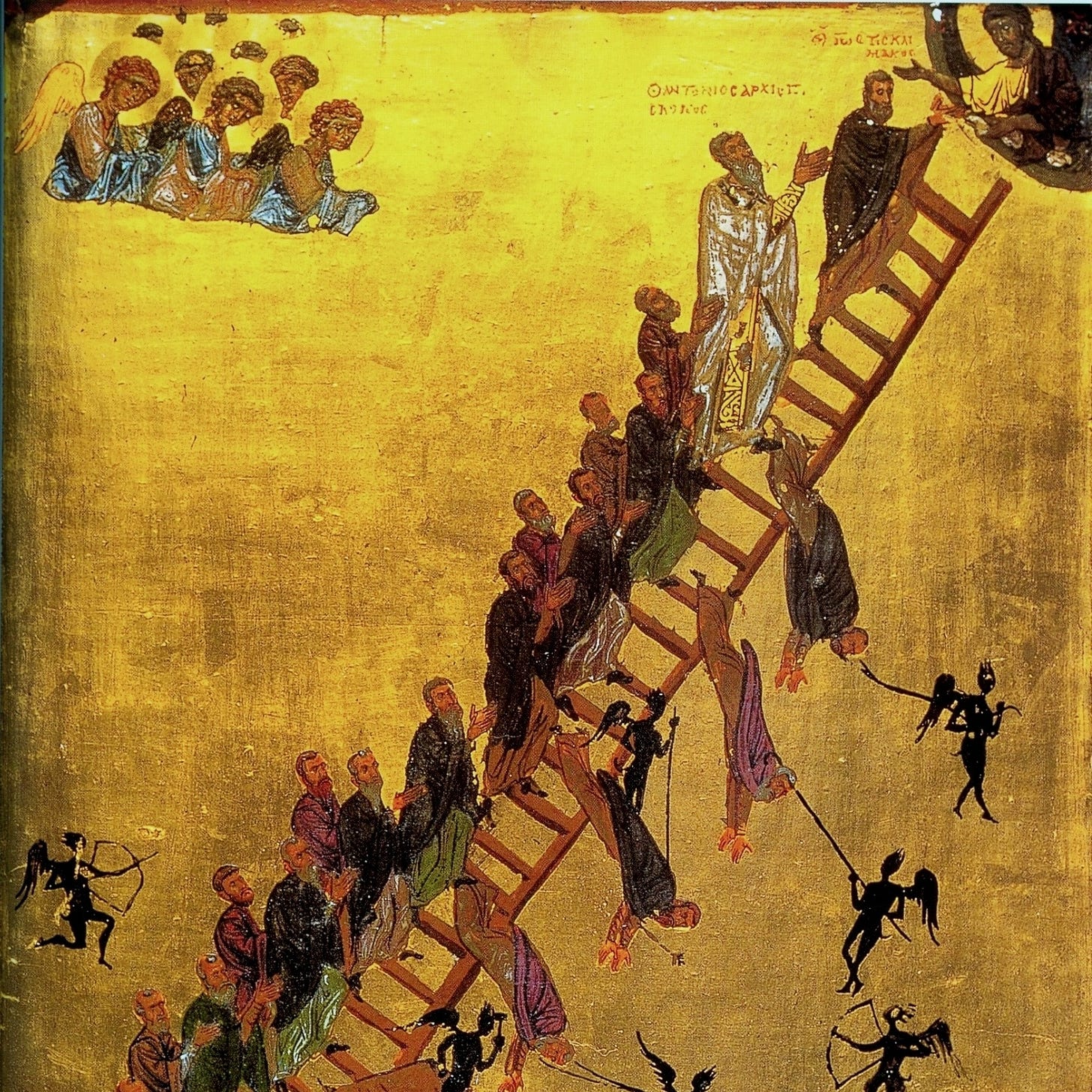How Does the Soul Ascend to God?
Discovering the Ladder of Love in Plato and Christian saints.
What if you had a map to find true happiness? That’s what the “ladder of love” is—an ancient practice that can bring fulfillment to your modern life.
A priestess named Diotima once told Socrates that eros—the natural love that desires to satiate in beauty and be happy—was a guide to draw your soul upward from lesser beauties to greater beauties until you find the divine. It was an ascent of the soul!
You may think eros is simply about sex (most do), but really it is nothing less than an invitation to transform your soul.
Plato discovered this ladder of love, and Christian saints adopted it into their spiritual writings.
Whether you are Christian or not, this spiritual practice can change your life…
Reminder: this is a teaser of our members-only deep dives.
To support our mission and get our premium content every week, upgrade for a few dollars per month. You’ll get:
New, full-length articles every Tuesday and Friday
The entire archive of members-only essays
Access to our paid subscriber chat room
The Problem of Eros
First—there is a big problem with eros. Eros is the desire to satiate in beauty and be happy, but that is the challenge: you want to be happy all of the time.
Not for just a moment—but always, which means your eros is an appetite that is always hungry for beauty. That means even a spouse, like a beautiful, amazing wife, is not going to be able to fully satisfy your eros, your natural love. You want endless beauty but everything in this life that offers happiness is limited.
Are you then condemned to a life of dissatisfaction? No! Plato and the Christian saints would agree. Eros is an invitation to ascend toward greater beauties that bring greater happiness.
How then do you reach these greater beauties? You listen to the ancients. The ladder of love is set before the soul, but you must know how to climb it.
A Map of the Soul
You cannot climb the ladder of love if you do not understand your soul. Luckily, Christian saints, drawing from Plato, have thought about this for centuries, and they teach the soul has three parts, that each part loves a particular beauty, and that each part has a practice that can make it better.
The lowest part of the soul is the appetitive. It loves pleasure, like sex and food. It is not bad—but it will take over if not properly controlled.
The second part of the soul is the spirited part (thumos in Greek). This part loves glory, honor, and fame—the kind that comes from great deeds and human excellence.
The third and highest part of the soul is the intellect, and it loves truth and delights in wisdom. And these three parts exist in hierarchy and must be kept in order. For example, if the appetitive takes control of the soul away from the intellect, the soul will live a life dedicated to pleasure and not truth.
Now, each part of the soul has a virtue that makes it better, healthier, and more beautiful. The intellect is made better by prudence, because it helps make wise choices. The spirited is made healthier by courage, because it allows it to endure difficulties and greater challenges. The appetitive is made more beautiful by temperance, because this virtue helps to bridle or rein in the desire for pleasure—curbing both lust and gluttony.
Where is justice? The virtue of justice ties them all together, ensuring the parts of the soul all work in harmony, making the soul beautiful.
That is the soul—its powers, their loves, and their virtues. And while this begins as a simple understanding of how your soul functions, it becomes a map to how your soul can climb to God via the ladder of love.
The First Rung: Icons of Beauty
The appetitive part of the soul, the lowest part, loves pleasure—and learning how to guide this part of the soul is the beginning of the ascent to God.
For many, especially young men, eros first sparks when you see a beautiful woman. This beauty pulls you out of yourself and inspires you to be better—to be worthy of the beauty you desire. Beauty is a challenge to which the soul must respond.
But eros does not stop at the beauty of a body—this is an immature eros; rather, the ladder of love invites the lover to love the soul of the beloved. This is why Pope Benedict XVI taught that eros between man and woman finds its deepest purpose in marriage. In marriage, the self-love of the lover is extended to the beloved, because the lover and the beloved become one flesh. The lover loves the beloved as himself.
Eros finds its purpose in marriage, and eros is always fecund. Love creates. And in marriage, the love of eros produces children.
You do not have to be Christian to see that people should not be consumed and discarded; rather, the beauty of a human being is a sign, an icon, of something far greater. In his Ladder of Divine Ascent, St. John Climacus tells the story of monk who every time he saw a beautiful woman, he drew closer to God her Creator. Her beauty was an invitation to contemplate higher beauties.
Christians use marriage as an icon of God’s love for you. In the Old Testament, the love between God and Israel is presented as a marriage. In the New Testament, Jesus is the Groom, and His Church is the Bride (Eph 5:21-33). In Christianity, eros is not contrary to what is holy but rather a sign of it.
You can see why eros must be guided by temperance—a moderation of pleasure—to allow the soul a healthy, clear understanding of physical beauty as an icon of higher realities. Beauty is a call to ascend.
The opposite would be to descend into lust. It would be a descent into a bestial life, a life of food and sex fit only for cattle, as Socrates teaches.
It sounds simple but this first rung of the ladder of love is calls for incredible self-discipline—but it will open your interior life to a peace otherwise unknown.
Keep reading with a 7-day free trial
Subscribe to The Ascent to keep reading this post and get 7 days of free access to the full post archives.



